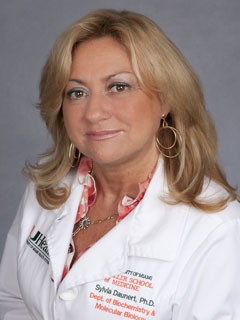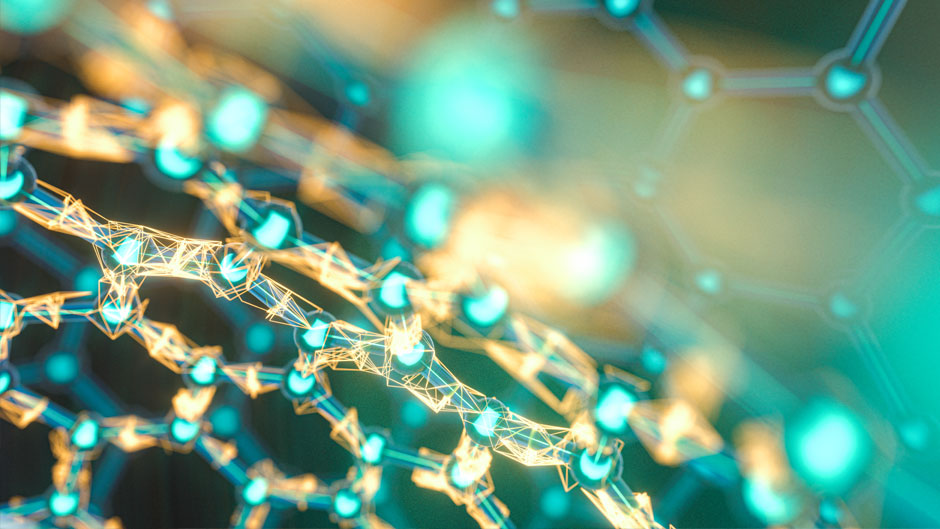Imagine being able to tint the windows of your car or office from bright sunlight within seconds of tapping a screen and to heat them in harsh weather, preventing fog from being a safety issue.
What if doctors were able to prescribe a new type of bandage that could help to heal chronic wounds, rather than simply cushioning them from further damage?
How about a cheap, paper-based tester to check water or food for bacteria that is often the culprit of foodborne illnesses, like E. coli?

These were all innovations presented by nanoscience graduate students at the NanoFlorida 2020 conference last Friday, hosted by the University of Miami’s Dr. John T. Macdonald Foundation Biomedical Nanotechnology Institute, also known as BioNIUM. Since its inception in 2012, BioNIUM has trained more than 200 students in nanoscience and nanotechnology strategies, and the institute has secured more than 50 patents and received more than $200 million in funding, said its director, professor Sylvia Daunert, the Lucille P. Markey Chair of Biochemistry and Molecular Biology at the Miller School of Medicine. Graduate students Michael Moraskie, Jessi Hersh, and Umer Bakali organized the virtual conference, which was attended by more than 500 participants.
“We are excited not just about developing science at the most basic level, but in translating it into the clinic and into other commercial applications,” Daunert said in her welcoming remarks.
The 13th annual NanoFlorida conference brought together students, faculty, and staff from across the Sunshine State, many as part of the Florida Association for Nanotechnology, to share ideas and collaborate on research to propel the field.
Nanotechnology has uncovered ways to manipulate materials as small as atoms and molecules to produce breakthroughs in science, medicine, and technology. At NanoFlorida 2020, some of the field’s pioneers, including biochemistry and engineering professor Paul S. Weiss, the UC Presidential Chair in the department of Chemistry and Biochemistry at the University of California, Los Angeles (UCLA), and Thomas J. Webster, the Zafiropoulo Chair of Chemical Engineering at Northeastern University, spoke about the massive inroads nanoscience has made since the field began about 39 years ago.

“What we are best known for is looking for the ultimate limits of miniaturization, the smallest switches and motors in the world,” said Weiss. “Once upon a time I was the first one to move atoms around on a surface with a scanning microscope. We were looking for what’s beneath the atoms and trying to figure out why they were where they were. It really opened up this world where we could make structures and then test them.”
Later, at the suggestion of his collaborator and wife, Anne Andrews, who is the Richard Metzner Endowed Chair in Clinical Neuropharmacology at UCLA, Weiss’ lab applied the process to cells in the human body.
“We learned to place those molecules and assemblies into controlled chemical environments,” said Weiss, who is part of a research team that was awarded $100 million in funding by President Barack Obama to investigate the inner workings of the brain. “And we used that to develop artificial receptors that could be put in the brain to listen in on chemical signaling.”
Uncovering that process allowed them to map brain activity, which could help lead to further advances in medical treatments and devices. Meanwhile, the field of nanotechnology has created things like cell therapies to treat genetic diseases, cancer immunotherapy treatments, and gene-modified stem cell therapy, to regrow human tissue. This also inches the medical field toward individualized medical treatments by isolating a person’s own diseased cells, identifying their genes, and devising a personalized treatment.
One thing touted by Weiss, Daunert, and Webster was the collaborative nature of nanotechnology.

“Because our field developed by bringing together people from chemistry, physics, biology, clinical medicine, neuroscience, electrical engineering, mechanical engineering, biomedical engineering, pharmacology, and so forth, we learned to speak each other’s languages, to take on each other’s problems and approaches, and to develop new approaches,” Weiss explained.
What keeps Weiss intrigued is the constant flow of fresh ideas and applications for nanoscience.
“We are developing new solutions to existing or new problems, and there’s an infinite number of them,” he said.
In particular, Webster said one area where nanoscience could help is with the ongoing COVID-19 pandemic.
“Viruses are nanostructured,” he said. “So, what better to stop it than a nanomaterial?”
Webster explained that the global pandemic has unveiled a host of problems with the United States’ health care system, including its one-size-fits-all approach to treatment. But many of these issues could be solved with nanotechnology.
For example, targeted therapies could be applied to a person based on their own physiology, he said.
“The virus interacts differently with different people, and yet we have the same approach—to treat every patient the same,” Webster said. “We have a reactionary system, which has gotten us in trouble with COVID-19.”
In addition, he said that since COVID-19 is transmitted through the air, medical treatments could be developed that would be aerosolized, like inhalers are used to treat asthma.
“Nanoparticles can easily be aerosolized, so what better target opportunity than something you could put in an inhaler and breathe in, to attach to those COVID-19 cells in your lungs,” Webster added.
Nanotechnology can even be applied to masks, Webster pointed out. A company in Israel is now selling masks that use nanoparticles of zinc oxide to capture and deactivate COVID-19 within the face covering, he said. And his colleague, Nian Sun, an electrical and computer engineering professor at Northeastern University, is working on a prototype of a mask with sensors that can detect if COVID-19 is in the room.
Also, one of the vaccines being developed for COVID-19 by Moderna uses nanoparticles as part of its approach, according to Webster.
Due to the endless innovation offered by the field, Webster said that the United States could be in a much stronger position to combat the next novel pathogen.
“Let’s do a much better job preparing for the next pandemic, and use nanotechnology to prevent it,” he said.

